12 Jan 01/12/2021
Your Guide to Plasma Cutting Safety
During the 1960s, a new innovative form of welding appeared on the scene: plasma cutting systems. Thermal Dynamics sold their first system to Ryerson Steel for processing stainless steel. Its advantages were immediately recognized: as a cleaner and a more accurate cut. Once just an industrial tool, plasma cutters are now extremely affordable and are used by professional metal workers and hobbyists alike.
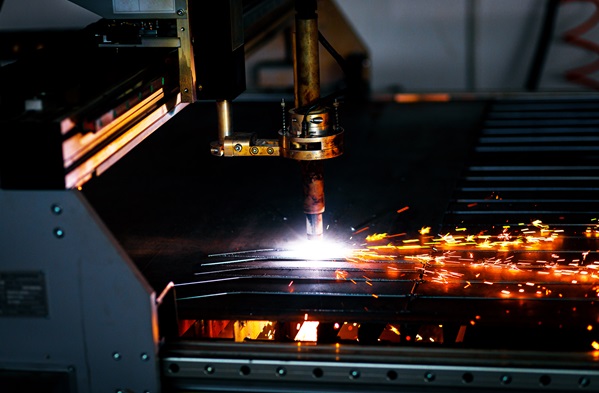
CNC Plasma Cutting Table
What is plasma cutting? Well, not many of us have an extensive physics background, so the process may initially seem complicated. However, we will break down how it works for you below. The easiest way to think of it is by visualizing a superheated, electrically ionized gas that melts through metal.
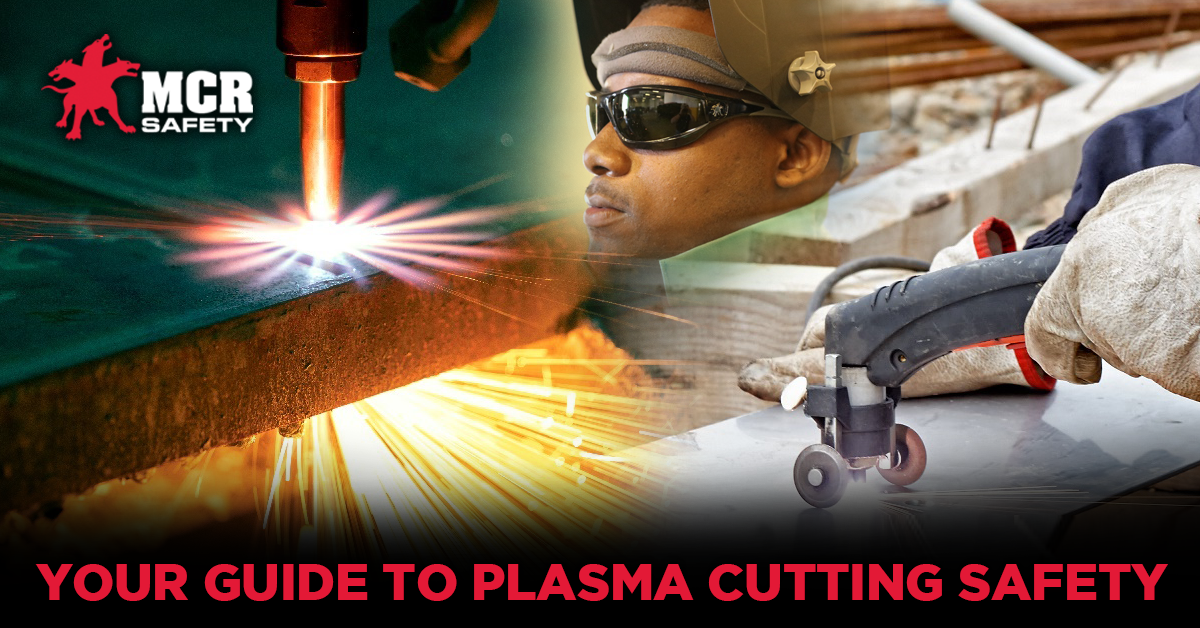
This article will go over how plasma cutting works, provide an overview of the safety precautions that should be taken when using a plasma cutter, and suggest the best ways to protect your eyes while working with one.
Plasma's Origin
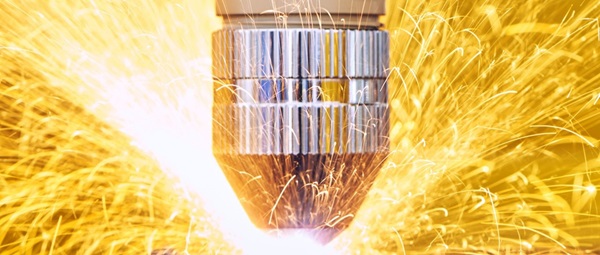
A traditional gas atom contains an equal number of positive ions and positive electrons. Plasma is created when heat causes many atoms to lose their electrons. The plasma stream from a plasma cutter is like a torch, where the plasma flows through a small opening at the end.
How Does Plasma Cutting Work?

Plasma cutting is the process that cuts through electrically conductive materials by using a strong jet of hot plasma. In other words, it uses the basic principles of physics to cut through metal such as steel, stainless steel, aluminum, brass, and copper.
The process requires compressed air and electricity, which, when combined, will create plasma gas.
Use in a Variety of Industries
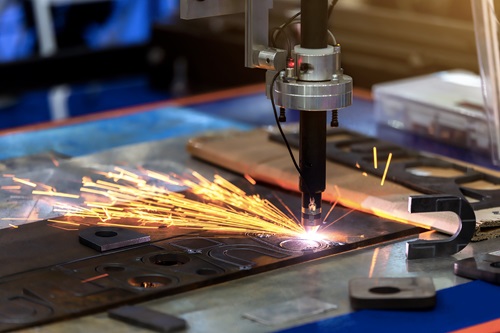
You'll find the plasma cutting process used across numerous industries, from creating custom art and signs to cutting aluminum to manufacturing finished parts. Automotive repair regularly employs plasma cutting, as custom parts are needed to fit different types of vehicles. However, multiple industries utilize this form of welding.
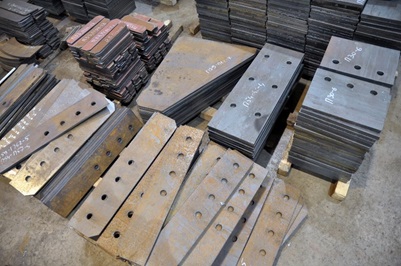
Examples of Metal Parts Made by Plasma Cutting
Here are some other industries utilizing this affordable cutting process:
- Industrial Construction – bridge construction
- Metal Centers – salvage and scrapping metal
- Manufacturing – factory maintenance and shipbuilding
Across each industry, both manual and mechanized plasma cutters are used. The equipment utilized all depends on what is needing to be cut and the mobility required. For example, construction work is performed remotely, not in a fixed building, which means you can't take mechanized cutters entirely with you out onto the job site.
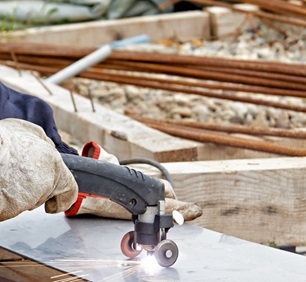
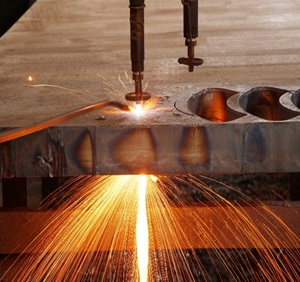
Manual Plasma Cutting vs. Mechanized Plasma Cutting
Advantage
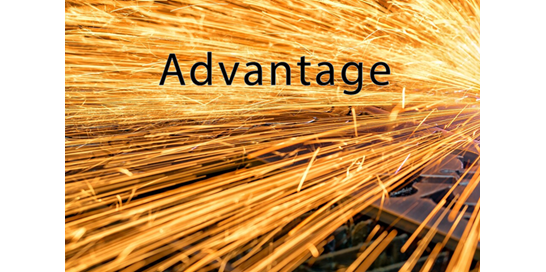
Since it was developed in the 1960s, plasma cutting technology has improved the process workers use to cut through metal. Some of the advantages of using a plasma cutter for your job are:
1. Saving Time and Money
Since hiring a contractor costs money based on the amount of time they spend on the project, a plasma cutter can cut the job's time in half, thus saving money in the long run.
2. Precision
A plasma cutter is controlled by a computer, which means robot-like precision is achieved every time and with no human error.
3. Versatility
Plasma cutters can cut through a wide range of metals with various thicknesses. And it cuts every time with consistent accuracy and speed.
4. Safety Features
Plasma cutters can be used underwater, which means that workers are exposed to lower heat levels and lower noise levels when using this technique.
5. Fast Delivery
With the time a fabricator is saving by using a plasma cutter, the materials are delivered faster to the construction site and with less chance of delay.
Keep in mind that there is no Garden of Eden, and there are always disadvantages to products and processes. High power consumption is one disadvantage of this cutting process.
Hazards
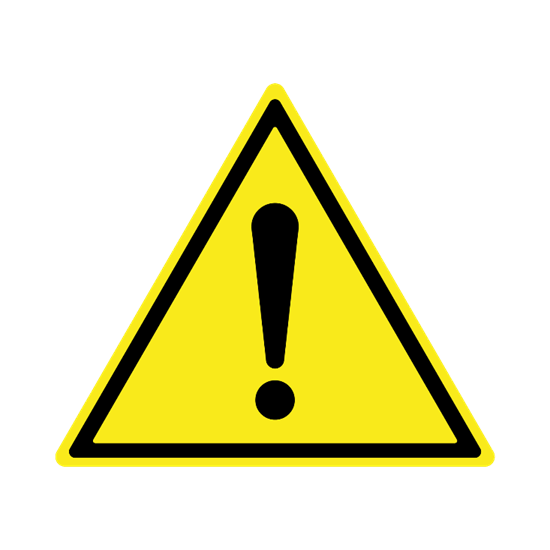
Like most tools on a worksite, working with a plasma cutter does pose its share of possible hazards. Noise, air quality, and electrocution are three of the most dangerous risks when working with a plasma cutter. Each of these risks can result in long-lasting health consequences.
Sparks, flames, and heat hazards are some of the dangers that MCR Safety directly addresses with personal protective equipment (PPE). The process of cutting through metal produces sparks and heat. If your skin is exposed to this hazard, you can quickly burn yourself. Likewise, a small spark could come in contact with your clothing, causing severe burns and personal injury.
Before we highlight safety and PPE, it is essential to note that plasma workers also face repetitive motion injuries. Advancing technology in plasma cutters has created cutters that can be used for more extended periods. That means a welder can do more work with fewer breaks, leading to repetitive motion injuries if working for prolonged periods.
Safety Gear
.png?h=500&w=600&hash=B27C8D6FD74FC76300C1245696B2EFD1)
Plasma cutters need to be handled and used with the utmost care. Some basic safety precautions you should always include:
- Keep a distance between your work area and your cutting area.
- Keep a fire extinguisher handy at all times.
- Do not use the plasma cutter without proper training from a professional.
While these three measures can help safeguard workers in many situations, wearing the proper protective equipment when using a plasma cutter should always occur. This protective equipment includes:
- Flame-Resistant (FR) Balaclavas
These head coverings utilize unique flame-resistant materials that resist ignition from sparks and flames, protecting the wearer's hair from burning. We carry two different options: the BLCVCX is made with Carbon X®, and the BLCVTCN is made with Westex®.
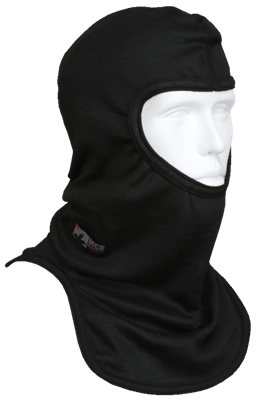
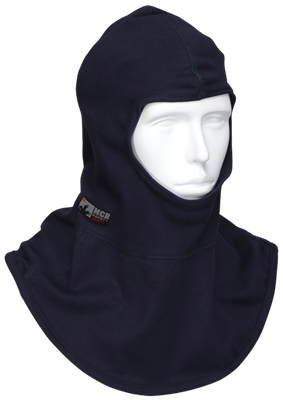
- Safety Cutting Glasses and Face shields
This equipment will protect your head, eyes, and face from sparks, debris, radiation, and intense light. Safety glasses are vital and will be discussed in greater detail later.
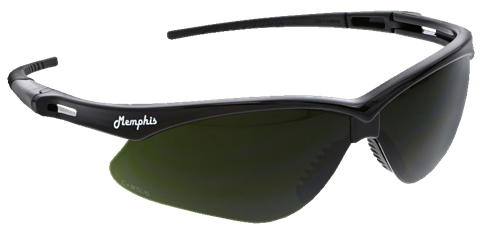
2. Gloves
Regardless of the welding process used, welding gloves help keep your hands protected from heat, sparks, and burns.
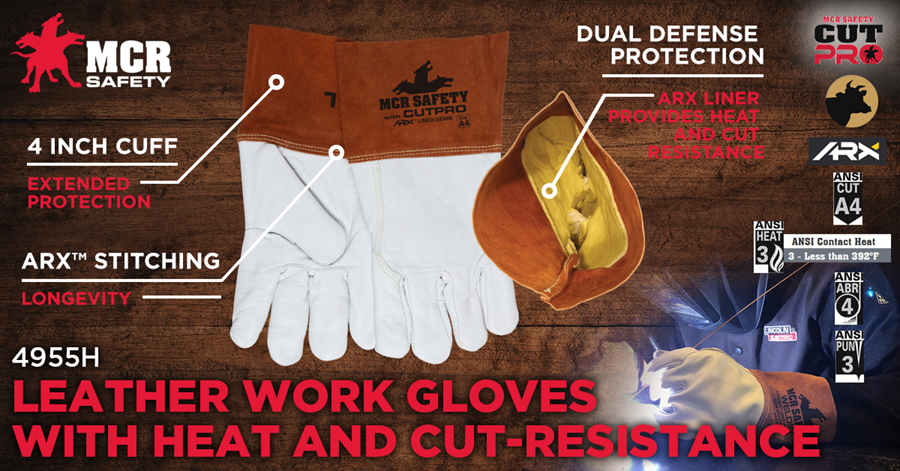
4955H – Cut-Resistant Welding Glove
3. Non-flammable and Heat-resistant Apparel
This type of apparel, such as a leather apron and jacket along with flame-resistant work shirts, will protect your skin from hot slag, sparks, or other debris that could cause severe burns.
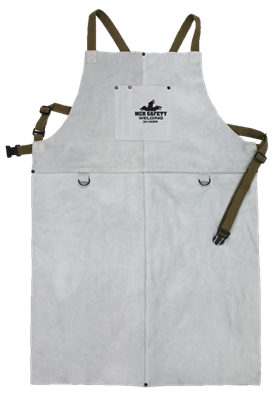
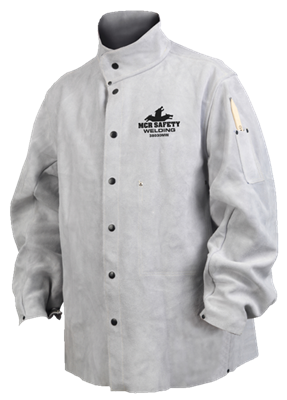
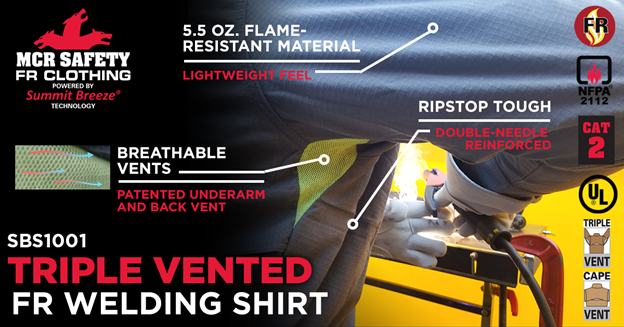
Patented FR Summit Breeze® Triple Vented Technology
MCR Safety offers the only triple-vented FR welding work shirt. It's the go-to choice for welders who want to stay comfortable and cool. We cover these shirts more in-depth in our Welding Shirts article.
As we mentioned above, noise hazards and ear protection are dangers that plasma cutters face. Wearing hearing protection will help workers avoid hearing damage and permanent hearing loss, while a respirator mask protects from the fumes and oxides resulting from plasma cutting. Although MCR Safety doesn't offer either type of PPE, we can get you in touch with a local company that does sell them. All you have to do is leave us your information below, and someone will be in touch. We have relationships with over 700 distributors nationwide and can have them contact you regarding any PPE you require.
Following the three general safety guidelines mentioned above and arming yourself with protective equipment ensures a safer work environment, especially when using a plasma cutter, allowing you to stay in one piece and enjoy all that life offers.
Plasma Eye Protection
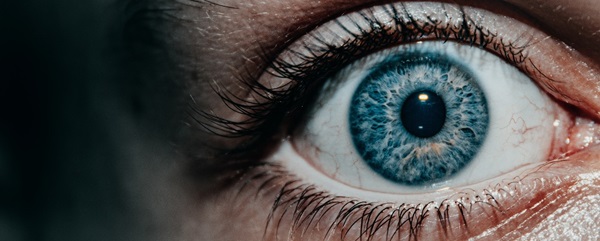
We've touched on eye protection some already. However, we're going to go a little deeper in this area, as there are some misconceptions around what eyewear protection is appropriate. And because over 10% of all eye injuries result from welding operations, it's worth spending some time discussing.
When using a plasma cutter, your eyes are particularly vulnerable to injury for a couple of reasons. First, they are at risk from flying debris or sparks, as mentioned above. As the Bureau of Labor Statistics (BLS) notes, flying particles of metal are always a concern for those working with machines. However, workers' eyes are also in danger because of the science behind plasma cutters themselves.
Like any electric arc, a plasma cutter gives off electromagnetic radiation, extending from the visible infrared light into the invisible ultraviolet range. Because of this light intensity, your eyes are at risk for extensive eye damage, including permanent blindness.
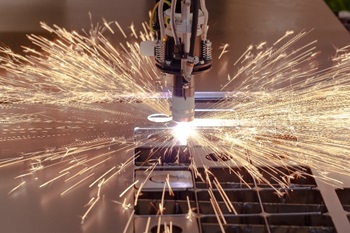
Plasma Cutting Light
Because of these significant risks, OSHA oversees specific mandates for eye protection to be worn depending on the job at hand. With standards for safety glasses always being updated, eye protection must now have filter lenses with a shade number that provides the appropriate protection against light radiation. A "W" marking identifies the welding filter shade number. W2.0, W3.0, and W5.0 are the individual filter levels, with each higher number indicating a darker filter offering increased protection.
Below are the OSHA-recommended protection requirements depending on whether you are doing plasma arc welding or plasma arc cutting:
| Process | Arc Current (Amperes) | Minimum Protective Shade | Suggested Shade Number |
|---|---|---|---|
| Plasma Arc Welding |
Less than 20 20 -100 100-400 400-800 |
6 8 10 11 |
6 to 8 10 12 14 |
| Plasma Arc Cutting |
Less than 20 20-40 40-60 60-80 80-300 300-400 400-800 |
4 5 6 8 8 9 10 |
4 5 6 8 9 12 14 |
When you look at the above chart, one thing probably jumps out at you: plasma welding requires at least a shade 6 level of protection. And, for the genuinely astute PPE wearer, you probably know that there are no safety glasses that provide a shade 6 for plasma arc welding. You must wear a welding helmet for all plasma arc welding operations. Only cutting applications with less than 20 amperes will allow for standard safety glasses with a filter 4- 5 to be used.
MCR Safety Cutting and Welding Glasses
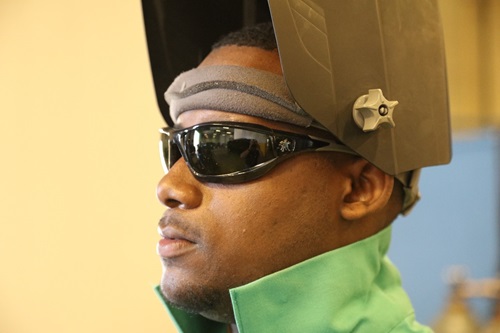
For all of your eye protection needs for any cutting task, we recommend checking out our eye protection catalog. Click on our eyewear catalog to see all the cutting safety glasses we offer with a 5.0 shading.
Our Memphis series 5.0 shade eyewear style (shown above) meets the Z49 filter requirement for plasma cutting. These stylish shades feature a wraparound lens design to leave your view unobstructed.
.png?h=471&w=900&hash=3FBDD0D080D9A900EE00F7167CAB9E4C)
Our New Memphis Plasma Cutting Glasses
Memphis glasses also have a soft, flexible TPR temple and a nose pad to ensure your comfort. And, last but not least, they include an eyewear cord to keep the glasses close by at all times.
Common Questions

What can a plasma cutter cut?
- Typical materials cut with a plasma process are steel, stainless steel, aluminum, brass, and copper.
Can you cut aluminum with a plasma cutter?
- Plasma cutting works on almost any type of conductive metal, including aluminum.
Will a plasma cutter cut stainless steel?
- Yes, since plasma cutting doesn't rely on oxyfuel, it is used to cut steel and stainless steel.
What shade level protection do I need for plasma cutting?
- According to the updated ANSI Z87.1 standard, filter lens shade selection is based on the welding process: arc current, electrode size, and plate thickness. Users should refer to the table found in ANSI Z490.1:2012, which highlights the appropriate filter shade for a variety of tasks. We've also provided a reference table above.
What eye protection is needed for plasma cutting?
- Choosing the appropriate filter shade is essential. Users can then select additional features they prefer in safety glasses, such as our new wraparound design found in our Memphis series glasses.
Additional Resources

We have collected some of our favorite blog posts and welding resource pages to help you stay safe when using a plasma cutter or any other type of welding equipment:
- Welding Protection
- Welding Eyewear Protection
- Welding Guide
- Welding in Oil and Gas
- Importance of the Eye and Welding Injuries
We know how important PPE is at work and we want to make sure you're armed with all the knowledge needed to make the best purchasing decisions.
MCR Safety Protects!
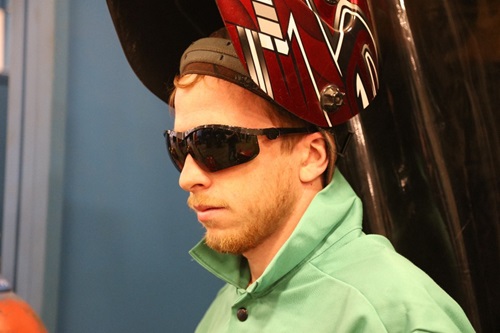
MCR Safety has been manufacturing leather work gloves, which includes welding options, since the 70s. Our complete welding lineup consists of leather gloves, leather apparel, FR clothing, hi-vis FR vests, and safety cutting glasses. We've got welders covered!
We welcome any comments, feedback, or suggestions for how we can best protect people at work.
For over 45 years, MCR Safety has proven to be a world leader in gloves, glasses, and garments. Whether it’s on the shop floor, an oil rig, or a construction site, we are there providing solutions to workplace hazards. It’s all part of our commitment to protect people.
No matter your industry, we have the personal protective equipment you need.
Learn more about MCR Safety by checking out our most recent video. For more information, browse our website, request a catalog, find a distributor, or give us a call at 800-955-6887.
About the Author
Latest Articles







